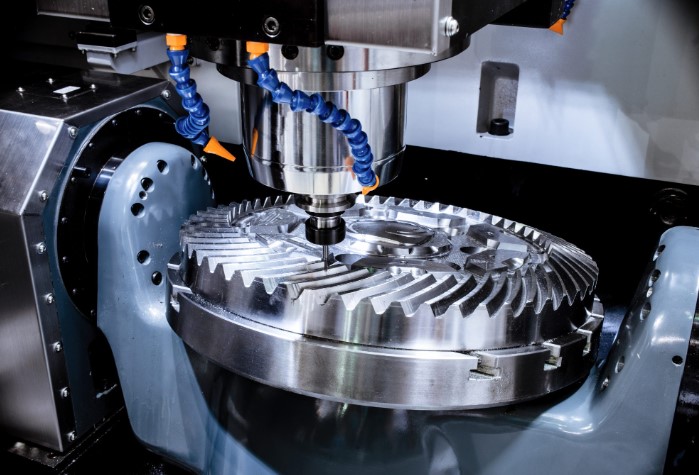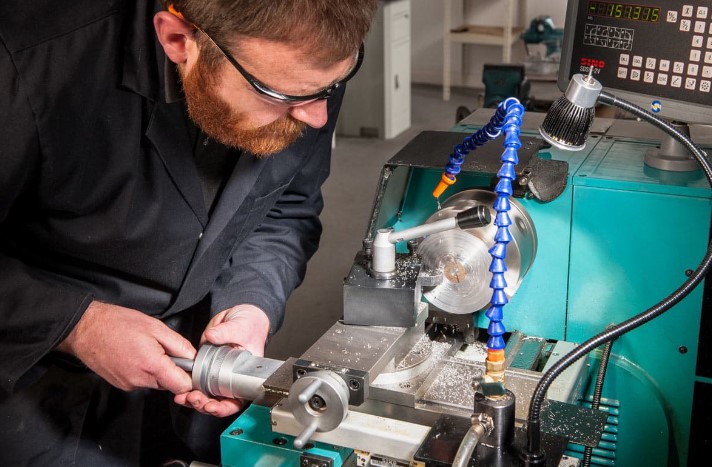Global Sewing Machine Market (2022 to 2028)
DUBLIN, July 11, 2022 /PRNewswire/ — The “Global Sewing Machine Market Size, Share & Industry Trends Analysis Report By Type, By Application, By Use Case, By Regional Outlook and Forecast, 2022 – 2028” report has been added to ResearchAndMarkets.com’s offering.

The Global Sewing Machine Market size is expected to reach $5.9 billion by 2028, rising at a market growth of 5.7{64d42ef84185fe650eef13e078a399812999bbd8b8ee84343ab535e62a252847} CAGR during the forecast period.
Fabric and other malleable materials are stitched together with threads using a sewing machine. The many parts of a sewing machine and their numerous functions assist the operator in making full use of the machine. Sewing machines of many varieties are used in the production of clothing and other items. The fabrics are readily operated in and out of a modern sewing machine with the convenience of thimbles, needles, and other hand sewing equipment, thereby automating the numerous stitching procedures and saving time. Sewing machines vary in size, cost, look, and task, with some being larger, faster, and more complicated. Needlestick injuries are common on modern sewing machines, hence safety equipment like needle guards are employed to avoid them.
With feeding devices, the sewing machine regulates the fabric and creates a flawless stitch to unite the textiles. It has several components and attachments, each with its own function and importance. Domestic sewing machines and industrial sewing machines are the two types of sewing machines. Housewives, connoisseurs, and artisans work in the domestic sub-segment to repair ruined clothing. These machines are used for creating imaginative embroideries on clothing and canvas, as well as stitching basic domestic clothing in a variety of situations. In the approaching years, this market is projected to be extremely popular. Car upholstery, bags, apparels, furniture products, clothing, and shoes are examples of industries that require sewing machines.
Sergers are another name for overlocked sewing machines. Sewing or overlocking the fabric is done with these machines. In basic terms, these machines are used by professionals or tailors to connect or stitch the edges of the fabric together (edging single cloth as well). They are used to give the garments a finished look. Edging napkins, elastic Hemming or elastic seaming in lingerie design, edging curtains, overlocking on pillow covers, and many more creative crafts are all done with this machine in the garment industry.
COVID-19 Impact Analysis
The COVID-19 pandemic caused lockdowns and restricted movement for individuals all across the world and resulted in millions of deaths across the world. As a result of the increased time spent at home, people began to take up new hobbies such as sewing, quilting, and knitting.
Despite the supply chain delays, numerous industry participants saw greater sales during the pandemic, owing to increased demand for sewing machines from households. The COVID-19 dilemma has enhanced the necessity of digitization and automation for the sewing machine sector. Sewing machine manufacturers are being pushed to innovate on their present product as well as workflow. Sewing machine makers can now adapt faster to changes in consumer demand, save money, and improve their operational efficiency due to advances in digital technology and communication tools.
Market Growth Factors
Rising Demand for Technical Textiles
Functional fabrics that are made of natural and synthetic fibers such as Vinyon, Spandex, Saran, Nomex, Modal, and others are known as technical textiles. The technical textile business is growing due to the numerous applications of these fibers in agriculture, building, clothing, and other industries.
Technical textile qualities such as high strength and superior insulation, high thermal resistance, and an elevated propensity are expected to result in increased textile market income. Furthermore, a growing number of construction projects necessitate the use of tarpaulins, scaffolding nets, roofing materials, and canopies, among other useful textile products. Sewing machines are utilized to manufacture these technical textiles, and thus, the growing demand for these technical textiles has a positive influence on the sewing machine market.
Rise in Disposable Income and Evolving Fashion Trends
The garment industry has grown tremendously as a result of continually changing fashion trends. The young population prefers to change their wardrobe frequently. This is enabled by their rising disposable income. In developing countries such as China and India, where the majority of the population is relatively young, the rise in disposable income is driving the demand for the latest and most fashionable clothing.
Another factor leading to the high demand for clothing is social media and social media influencers that promote the latest trends amongst the larger population. Social media is used effectively by clothing and fashion brands to keep consumers interested in keeping up with the latest trends.
Market Restraining Factors
Safety Concerns and Learning Curve for Beginners
The majority of sewing machines are extremely safe to operate and have built-in safety mechanisms to prevent injury. At the same time, reading the owner’s handbook and following all of its safety precautions is an important aspect of learning to use a new machine. Sewing machines come with a greater risk of serious injury than working with a needle and thread.
They are also a potential source of electrical issues including shocks and short circuits. Sewing requires some skill and patience, and it improves with practice. It can be difficult and aggravating. Sewing can be physically demanding.
Key Topics Covered:
Chapter 1. Market Scope & Methodology
Chapter 2. Market Overview
2.1 Introduction
2.1.1 Overview
2.1.1.1 Market Composition and Scenario
2.2 Key Factors Impacting the Market
2.2.1 Market Drivers
2.2.2 Market Restraints
Chapter 3. Strategies deployed in Sewing Machine Market
Chapter 4. Global Sewing Machine Market by Type
4.1 Global Electric Market by Region
4.2 Global Computerized Market by Region
4.3 Global Manual Market by Region
Chapter 5. Global Sewing Machine Market by Application
5.1 Global Industrial Market by Region
5.2 Global Commercial Market by Region
5.3 Global Residential Market by Region
Chapter 6. Global Sewing Machine Market by Use Case
6.1 Global Apparel Market by Region
6.2 Global Shoes Market by Region
6.3 Global Bags Market by Region
6.4 Global Others Market by Region
Chapter 7. Global Sewing Machine Market by Region
Chapter 8. Company Profiles
8.1 Mitsubishi Electric Corporation
8.1.1 Company Overview
8.1.2 Financial Analysis
8.1.3 Segmental and Regional Analysis
8.1.4 Research & Development Expense
8.2 Juki Corporation
8.2.1 Company Overview
8.2.2 Financial Analysis
8.2.3 Segmental and Regional Analysis
8.2.4 Recent strategies and developments:
8.2.4.1 Partnerships, Collaborations, and Agreements:
8.2.4.2 Product Launches and Product Expansions:
8.3 Brother Industries, Ltd.
8.3.1 Company Overview
8.3.2 Financial Analysis
8.3.3 Segmental and Regional Analysis
8.3.4 Research & Development Expenses
8.3.5 Recent Strategies and Developments
8.3.5.1 Product Launches and Product Expansions:
8.4 Bernina International AG
8.4.1 Company Overview
8.4.2 Recent strategies and developments:
8.4.2.1 Product Launches and Product Expansions:
8.5 Janome Corporation
8.5.1 Company Overview
8.5.2 Recent strategies and developments:
8.5.2.1 Product Launches and Product Expansions:
8.6 Merrow Sewing Machine Co.
8.6.1 Company Overview
8.6.2 Recent strategies and developments:
8.6.2.1 Acquisition and Mergers:
8.7 Necchi Italia s.r.l.
8.7.1 Company Overview
8.8 SVP-Singer Holdings, Inc. (Platinum Equity)
8.8.1 Company Overview
8.9 Tacony Corporation
8.9.1 Company Overview
8.10. Usha International Ltd.
8.10.1 Company Overview
8.10.2 Recent strategies and developments:
8.10.2.1 Partnerships, Collaborations, and Agreements:
For more information about this report visit https://www.researchandmarkets.com/r/z1olhj
Media Contact:
Research and Markets
Laura Wood, Senior Manager
[email protected]
For E.S.T Office Hours Call +1-917-300-0470
For U.S./CAN Toll Free Call +1-800-526-8630
For GMT Office Hours Call +353-1-416-8900
U.S. Fax: 646-607-1907
Fax (outside U.S.): +353-1-481-1716
Logo: https://mma.prnewswire.com/media/539438/Research_and_Markets_Logo.jpg

View original content:https://www.prnewswire.com/news-releases/global-sewing-machine-market-2022-to-2028—size-share–industry-trends-analysis-report-301583779.html
SOURCE Research and Markets







